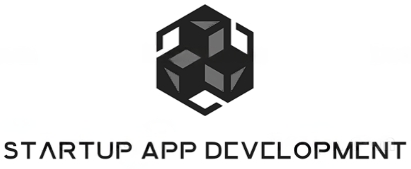Building a successful app can seem like a daunting task, especially for startups stepping into the competitive digital landscape. However, gaining insights from experienced app developers can smooth the journey. This blog will guide you through some expert advice to help you build your dream app.
Understanding the Startup Ecosystem
Startups are unique entities with innovative ideas but often limited resources. Understanding this ecosystem helps in tailoring your app development approach to fit your needs. Embracing a startup mindset involves recognizing the fast-paced, ever-changing environment in which these businesses operate. An essential aspect of this ecosystem is the need for agility. Startups must be able to pivot quickly, often based on user feedback and market demands. For instance, integrating an agile development methodology can greatly benefit your startup, allowing for rapid prototyping and iterative improvements. Such approaches facilitate ongoing enhancements without the need for extensive redevelopment, which can be both costly and time-consuming.
Networking within the startup community can also offer significant advantages. Engaging with other entrepreneurs and developers can provide fresh insights and potential collaborations. Many startups also benefit from joining incubators and innovation hubs, which offer resources and mentorship that are invaluable in the early stages. These platforms can open doors to venture capital and other funding opportunities, helping overcome financial constraints. Furthermore, understanding regulatory requirements and securing intellectual property rights early on can prevent potential roadblocks, ensuring your startup is built on a solid foundation from the very beginning.
Defining Your App’s Core Purpose
Before diving into development, it’s crucial to clearly define the core purpose of your app. This will guide all aspects of its design and functionality. Start by identifying the problem your app aims to solve or the value it intends to provide. Whether it’s enhancing productivity, improving communication, or simply delivering entertainment, a well-defined purpose is the linchpin of successful app development. Consider engaging potential users early in the process to gather insights into their needs and expectations. User interviews, surveys, and market research can inform your understanding of the market landscape and help validate your app’s concept.
Once you have a clear understanding of the core purpose, it becomes easier to map out your app’s features and functionalities. Prioritize essential features that directly support the primary goals of your app. This approach not only streamlines development but also helps manage resources effectively. Additionally, keeping the focus on your app’s primary purpose aids in maintaining a consistent brand message and user experience. As you progress, revisit your app’s purpose to ensure that new features or changes align with its core objectives. This strategic alignment reinforces your app’s unique value proposition, ensuring it retains its relevance and appeal across different stages of its lifecycle.
Choosing the Right Development Team
Selecting a knowledgeable and experienced app development team is key. Look for a team that not only understands technology but also resonates with your startup’s vision. This alignment is crucial as it ensures that the team is as passionate about your project as you are, which can significantly influence the outcome. When evaluating potential teams, consider their past projects and client testimonials. A strong portfolio that includes diverse projects within your industry can be a good indicator of their capabilities. It’s also important to assess their proficiency with the technologies and platforms that will be used in your app development, such as React Native, which offers cross-platform functionality and reduced development times.
Effective communication is another critical factor when choosing a development team. Establishing clear channels for ongoing dialogue ensures that all parties are aligned and any issues or changes can be promptly addressed. An ideal team should be open to feedback and willing to collaborate closely with you, adopting your suggestions and adapting to changes smoothly. Additionally, consider the cultural fit with your team, as this can influence the working relationship and project dynamics. A team that shares your entrepreneurial spirit, vision, and commitment to excellence can act as a true partner throughout the development journey, helping to bring your dream app to fruition with efficiency and creativity.
Utilizing Efficient Development Processes
Implementing efficient development processes, such as Agile or Scrum, ensures a smooth workflow and the ability to adapt quickly to changes in the project. Agile methodology, in particular, champions flexibility and iteration, allowing teams to deliver working software quickly and make necessary adjustments based on user feedback. This iterative approach also facilitates early bug detection and continuous improvements, leading to a more robust end product. Using Agile can significantly benefit startups by fostering a collaborative environment where developers, designers, and stakeholders can work closely to refine and enhance the app consistently.
Effective project management tools are also invaluable in maintaining efficient processes. Platforms like JIRA, Trello, or Asana can help organize tasks, track progress, and manage deadlines effectively. These tools streamline communication and transparency within the team, ensuring everyone is on the same page with respect to project timelines and deliverables. Furthermore, by integrating continuous integration and continuous deployment (CI/CD) practices, teams can automate testing and deployment processes, enhancing productivity and reducing the scope for human error. Ultimately, a streamlined development process not only saves time and resources but also enhances the quality and reliability of the final product, setting your startup on a path to success.
Prioritizing User Experience
Creating an app with the end-user in mind is vital. A user-friendly interface and seamless user experience can set your app apart from the competition. Begin by mapping out the user journey, ensuring that each interaction point is intuitive and aligned with user expectations. Consider employing user-centric design principles, which focus on the needs and preferences of the users at every stage of the design process. By involving users early on, through practices such as user testing and focus groups, you can gather valuable insights that pave the way for a design that resonates with your target audience.
Moreover, accessibility should be a key consideration. Designing an app that caters to users of all abilities not only broadens your app’s reach but also demonstrates a commitment to inclusivity. Apply accessibility standards and guidelines such as the Web Content Accessibility Guidelines (WCAG) to ensure your app is usable by as many people as possible. Additionally, consistency in design elements, such as fonts, colors, and navigation patterns, contributes to a cohesive and pleasant user experience. By continuously refining the UI/UX based on real user feedback and analytics, you can ensure your app not just meets but exceeds user expectations, driving higher engagement and retention rates.
Testing and Iteration: Learning from Feedback
Continuous testing and iteration based on user feedback ensure the app meets user needs and adapts over time to improve user satisfaction. Start with routine testing cycles that cover various aspects such as performance, usability, and compatibility across devices and operating systems. This proactive approach helps identify bugs and areas for improvement before they affect the user experience. Employ automated testing alongside manual tests to ensure thorough coverage and efficient identification of defects. Beta testing can serve as an ideal opportunity to gather real-world user feedback, unveiling potential issues and insights that regular testing might miss.
Post-launch, maintaining an open channel for user feedback is crucial. Encourage users to share their experiences and pain points, utilizing this valuable data to guide future updates and enhancements. Employ data analytics to track user behavior and correlations, identifying which features are most popular and which are underperforming. Regular updates, informed by this feedback, not only resolve existing issues but also introduce new functionalities that keep users engaged. By prioritizing testing and iteration continuously, your app remains responsive to user demands and market trends, strengthening its position in the competitive digital landscape.
Bringing Your App Vision to Life
Building your dream app is a journey, but with the right insights and careful planning, it becomes an achievable goal. By listening to experienced developers and adapting their tips to your unique vision, you’ll be well on your way to creating an app that stands out.


